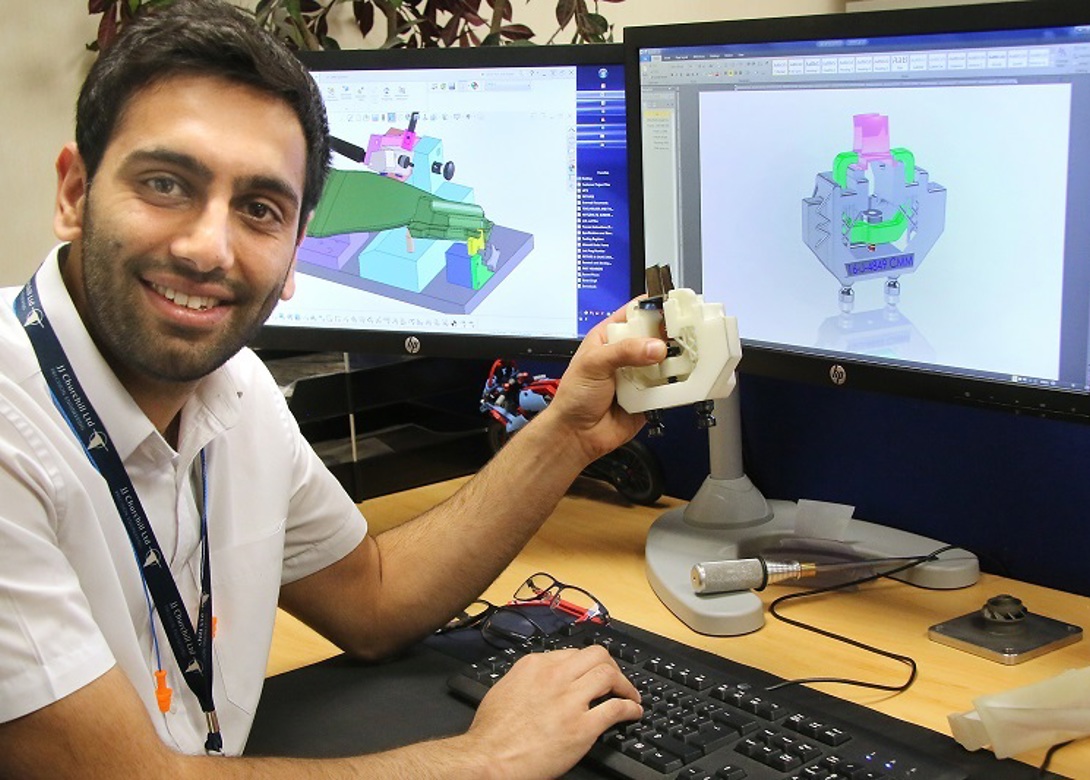
3D printing has enabled JJ Churchill to reduce the time it takes to prepare fixtures by 70% in its CMM quality inspection process, and lower costs by 50%. The company worked in partnership with HK3D to produce the fixtures, which are being used for an OEM in the aerospace industry.
The fixture was needed to hold the components in the most effective orientation for the CMM and needed to deliver repeatable precision loading, plus ease of use. Usually a fixture could only be manufactured once the components have already been machined, a process that typically took two weeks. However, JJ Churchill and HK3D worked together to design and deliver a working fixture in three days.
Traditional manufacturing prove-out processes follow a linear path:
1. Write the CMM programme
2. Wait for components to be machined
3. Prove-out CMM programme
4. CMM programme for production
JJ Churchill found that Steps 2-3 can cause a bottle neck and so by using 3D printing it was able to develop an alternative solution with HK3D for fixturing to resolve this issue.
Karan Singh, one of JJ Churchill’s manufacturing engineers and the lead in additive manufacturing, said: “The benefits of bringing 3d printing into traditional manufacturing process are huge. In this project, not only did we achieve significant savings in time and money, but our knowledge and capability has rocketed.”
“It made us analyse a problem in different ways and pushed our way of thinking. It has also changed the way I think as a design engineer, and I have found it highly fulfilling. This is a great example of additive and traditional manufacturing working in synergy to deliver huge savings in time and money.”
Managing director Andrew Churchill said, “This is another example of JJ Churchill applying emerging technologies to component manufacturing and inspection techniques. The adoption of 3d printing and its application to the way JJ Churchill engineers its products fundamentally increases our agility as a business to meet our customers’ new product Introduction timescales, whilst at the time reducing the cost of tooling.”
Tom Smith, sales manager of HK3D, added: “By investing time into this project, JJ Churchill has worked closely with our team of application engineers to fully optimise our range of additive technologies. As a result, the company has really started to unlock the true benefits of additive manufacturing. With new ground-breaking technologies on the horizon we are excited to see how JJ Churchill’s team will continue to evolve and apply them to their existing manufacturing processes”.

Will joined Fastener + Fixing Magazine in 2007 and over the last 12 years has experienced every facet of the fastener sector – interviewing key figures within the industry and visiting leading companies and exhibitions around the globe. Will manages the content strategy across all platforms and is the guardian for the high editorial standards that the brand is renowned.
Don't have an account? Sign Up
Signing up to FastFixTechnology.com enables you to manage your account details.